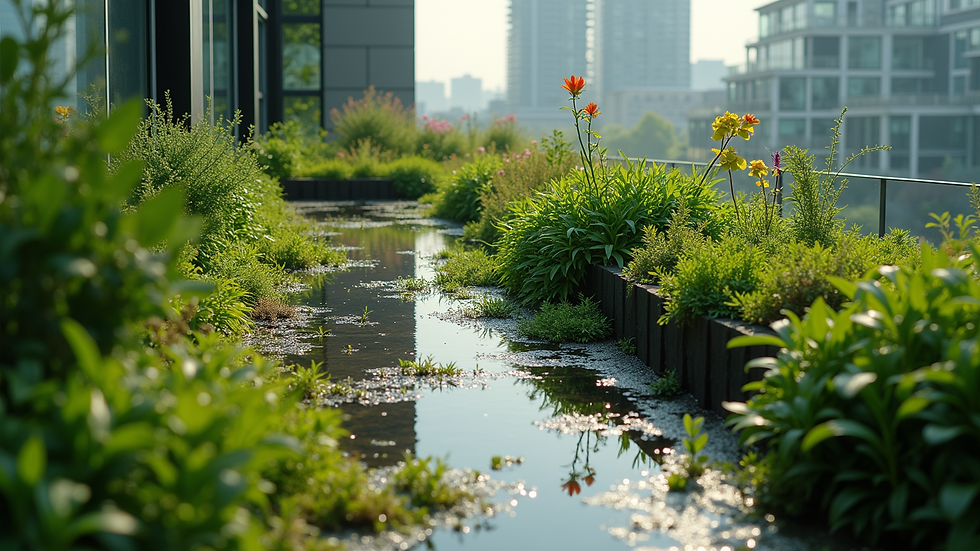It's time to invest in energy reduction with living, breathing, natural solutions
- TIGA Green
- Feb 27, 2023
- 2 min read
Updated: Jun 13, 2023
The simple process of introducing a living root or wall to your property not only enhances the visual surroundings - it gives rise to a multitude of environmental benefits and energy savings.
Rainwater run-off and flash floods are becoming high on the agenda for local and water authorities. Once laid, a living roof is considered an area of the soft landscape that slowly filters water towards holding tanks for reuse or storm drains for disposal.
Oxygen levels are enhanced due to the micro-climate; the roof surface remains cooler and more humid due to the process of absorbing carbon and producing oxygen.

Improved thermal performance - while thermal benefits are felt in both summer and winter, it is widely accepted that they are greatest in the summer months. There are large reductions in air-conditioning costs during the summer months due to the natural cooling. Additional benefits during winter are drainage layers, growing media and vegetation matrix components that create thermal resistance against heat loss.
Heat island effect, loss of green spaces within cities, extensive use of concrete and asphalt, and other hard roofing materials create heat islands. The fact is that temperatures are higher, and air quality can be lower in urbanised areas. Living roots and walls directly negate this effect.
A study at Trent University was conducted on an ambient day 18.4°C, and a bare membrane roof had a surface temperature of 32°C. An identical roof with an extensive living roof showed a surface temperature of 15°C.
Wildlife and habitat, while it is accepted that Living roofs and walls cannot replace the natural environment for biodiversity, they do, however, make some provision for wildlife in urban settings. They create stepping stones enabling various species to reach further into their built environment. Longevity of building and waterproofing. the sub-structure of the roof and waterproofing are protected from UV degradation and rapid temperature changes, the very climactic processes that reduce their longevity.




Comments